Sharing is caring!
My favourite flavours from Filipino Adobo meets spaghetti through this plate of Vegan Adobo Pasta. Adobo is probably the most popular Filipino dish and is one that I grew up enjoying. This adobo pasta is packed with all my favourite flavours from Filipino adobo – it has umami from the mushrooms, savoury, sour, and some sweetness for the sauce that coats the spaghetti really well.

Each family probably has their own take on it based on their preferences. I prefer my adobo on the more acidic side since I love sour foods but my sister prefers adobo with a hint of sweetness (more of a Chinese-Filipino style adobo) so when cooking this, feel free to adjust the seasonings to your desired taste and see what you like from there.
WHAT IS ADOBO?
Adobo is actually a way of cooking in Filipino cuisine and there are various adobo dishes depending on the main protein/ingredients. Growing up, the most common type of adobo we’d have at home was a classic Pork Adobo or a Chicken Adobo.
These are usually made with pork belly with generous amount of fats in the cut that are cooked with whole peppercorns, bay leaves, lots of onions & garlic in a savoury and sour sauce with a little sweetness from sugar.
OTHER FILIPINO ADOBO DISHES
There are also a lot of types of adobo throughout the Philippines ranging from Adobong Manok (Chicken Adobo), Adobong Pusit (Squid Adobo), Adobong Kang Kong (Morning Glory Adobo), and one of the most common—Adobong Baboy (Adobong Baboy).

This adobo pasta is packed with all my favourite flavours from Filipino adobo – it has umami from the mushrooms, savoury, sour, and some sweetness for the sauce that coats the spaghetti really well.

WHAT DOES ADOBO TASTE LIKE?
Adobo is predominantly savoury with a kick of acidity from the vinegar and can have sweet notes from the sugar, that also balances out acidity.
It’s really a personal preference how you want your adobo to taste like but a traditional Filipino adobo usually has acidity from the use of vinegar. At home we have a few versions of adobo.
One version is a classic Filipino adobo with more or less equal portions of soy sauce and vinegar for a good savoury and sour kick.
Another versions is more of a Chinese-style adobo, that’s on the sweeter side. Chinese-style adobo we cook at home uses soy sauce with lots of sugar so it’s a lot sweeter. A sweet Chinese-style adobo is my sister’s favourite and she prefers this over a classic Filipino adobo.
There’s really no one-size-fits all recipe to an adobo since there are many different ways adobo is cooking in the Philippines and each family has their own take on it based on their preferences. So when cooking this, feel free to adjust the seasonings to your desired taste and see what you like from there!
You can check out my vegan adobo recipe here.
WHAT YOU’LL NEED FOR THIS ADOBO PASTA

WHAT TO DO
- Heat a pot of water for your pasta. Add a generous amount of salt.
- Meanwhile, heat a pan or skillet over medium heat. Once hot, add the oil. Sauté the onion until slightly translucent before adding in the sliced garlic. Cook the garlic until lightly brown. You can also crisp up the garlic if you’d like yours crispy. Add in the pepper corns, bay leaves, and mushrooms or protein of choice.
- Add your pasta in the boiling water and cook until still very chewy or al dente. Once cooked, drain from the water and set aside the pasta water for use.
- Add the soy sauces, vinegar, sugar, and pasta water to the mushrooms or protein. Allow the sugar to completely dissolve. Add in the cooked pasta and mix well.
- Add more pasta water, if needed, and then taste your pasta. Feel free to season with more soy sauce or salt and pepper to taste.You can also add more sugar or vinegar to add more sweetness/acidity depending on your preference.
- Cook for a few more minutes or until the excess water has evaporated.





- Finish with dried chili flakes or powder, if desired. Enjoy your adobo pasta while it’s hot!

OTHER FILIPINO RECIPES YOU MIGHT LOVE:
- Adobo
- Tokwa’t Baboy
- Filipino Kaldereta or ‘Meat’ Stew
- Mushroom Tocino
- Fried Garlic Rice
- Lumpiang Gulay or Fried Vegetable Spring Rolls
- Filipino “Pork” Barbecue
- Crispy Tofu Sisig
- Tofu and Mushroom Salpicao
- Bola-Bola (Filipino Meatballs)
Vegan Adobo Pasta
Ingredients
Adobo
- 2 tbsp olive oil or cooking oil
- 1 small red onion sliced or diced
- 6-8 cloves garlic thinly sliced (or more garlic if you’d like!)
- 3.5 oz fresh mushrooms or protein of choice of choice diced or sliced (I used shiitake mushrooms)
- 2 dried bay leaves or laurel leaves
- 1/2-1 tsp whole pepper corns you can opt to crush these or keep them whole, I like mine whole
Pasta
- 4.5 oz dry spaghetti or pasta of choice
Seasoning
- 1 1/2 – 2 tbsp soy sauce adjust to taste
- 2 tbsp distilled white vinegar
- 2 tsp dark soy sauce , optional for colour — this gives the pasta that caramel colour
- 1 tbsp brown sugar adjust to desired sweetness
- Pasta water (around ~1/4 cup)
- Salt and pepper to taste
To Finish
- Dried chilli flakes or chili powder optional for heat
Instructions
- Heat a pot of water for your pasta. Add a generous amount of salt.
- Meanwhile, heat a pan or skillet over medium heat. Once hot, add the oil. Sauté the onion until slightly translucent before adding in the sliced garlic. Cook the garlic until lightly brown. You can also crisp up the garlic if you’d like yours crispy. Add in the pepper corns, bay leaves, and mushrooms or protein of choice.
- Add your pasta in the boiling water and cook until still very chewy or al dente. Once cooked, drain from the water and set aside the pasta water for use.
- Add the soy sauces, vinegar, sugar, and pasta water to the mushrooms or protein. Allow the sugar to completely dissolve. Add in the cooked pasta and mix well.
- Add more pasta water, if needed, and then taste your pasta. Feel free to season with more soy sauce or salt and pepper to taste.You can also add more sugar or vinegar to add more sweetness/acidity depending on your preference.
- Cook for a few more minutes or until the excess water has evaporated.
- Finish with dried chili flakes or powder, if desired. Enjoy while hot!
WATCH Video
NUTRITIONAL INFO
You can pin this image:







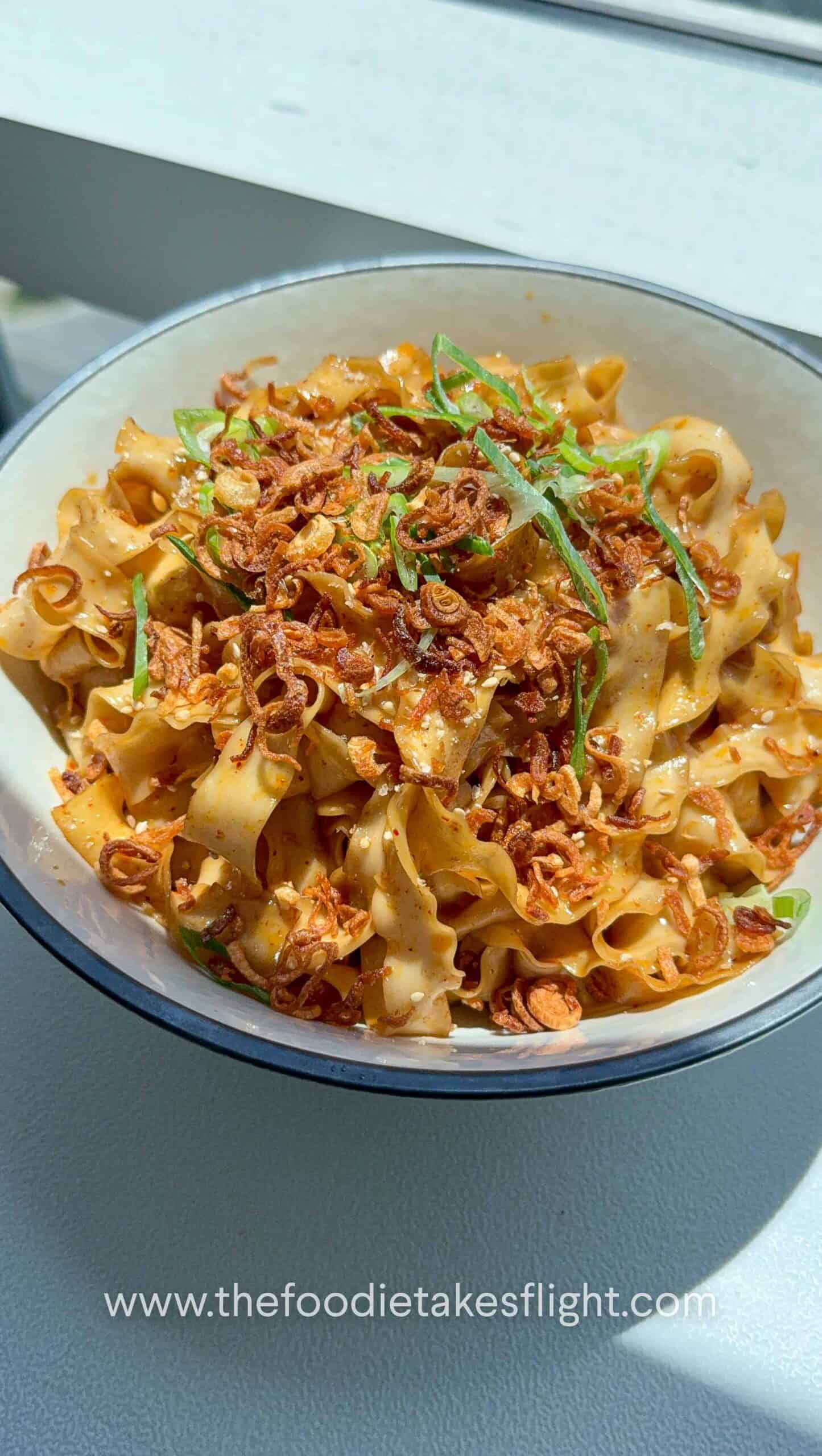
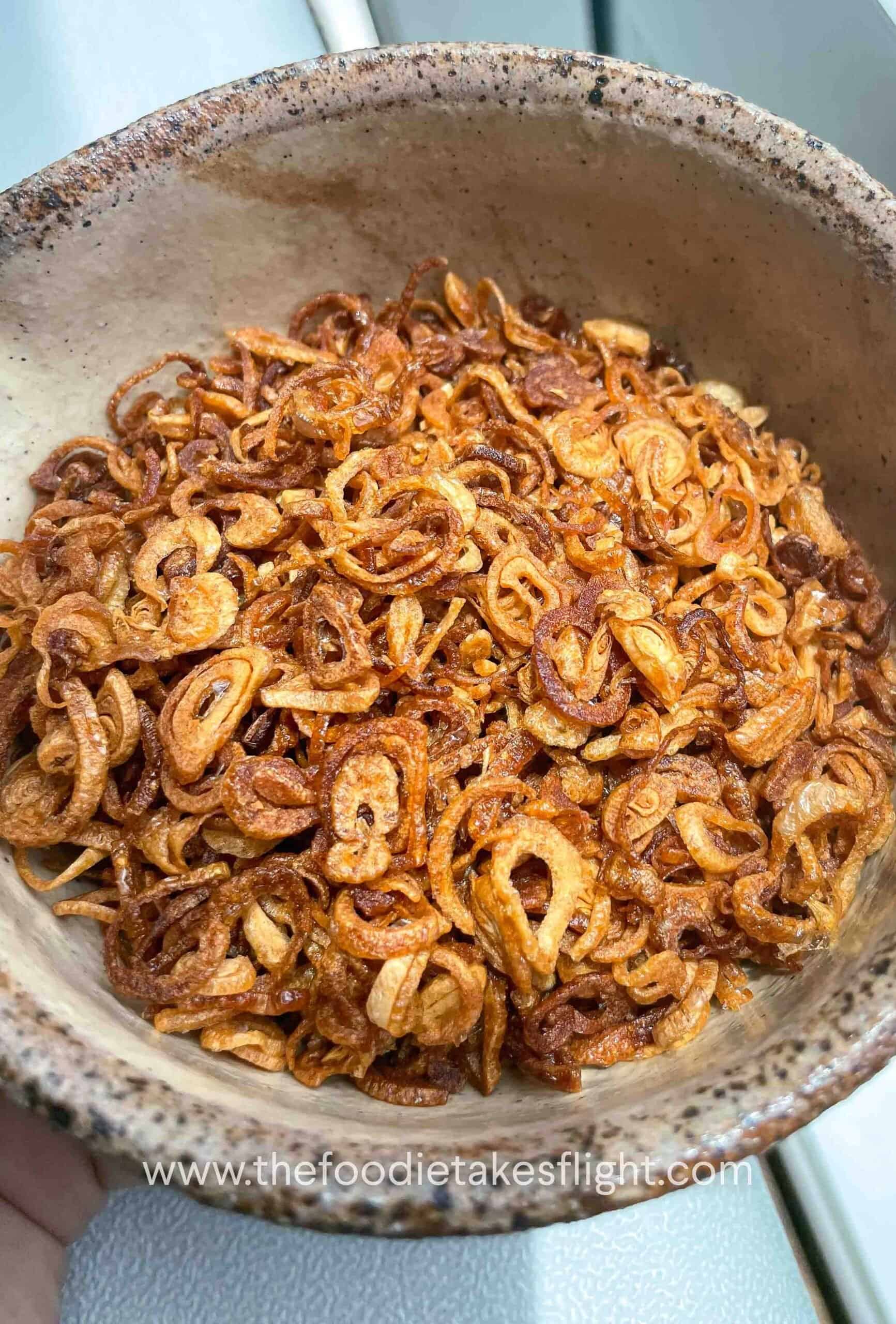
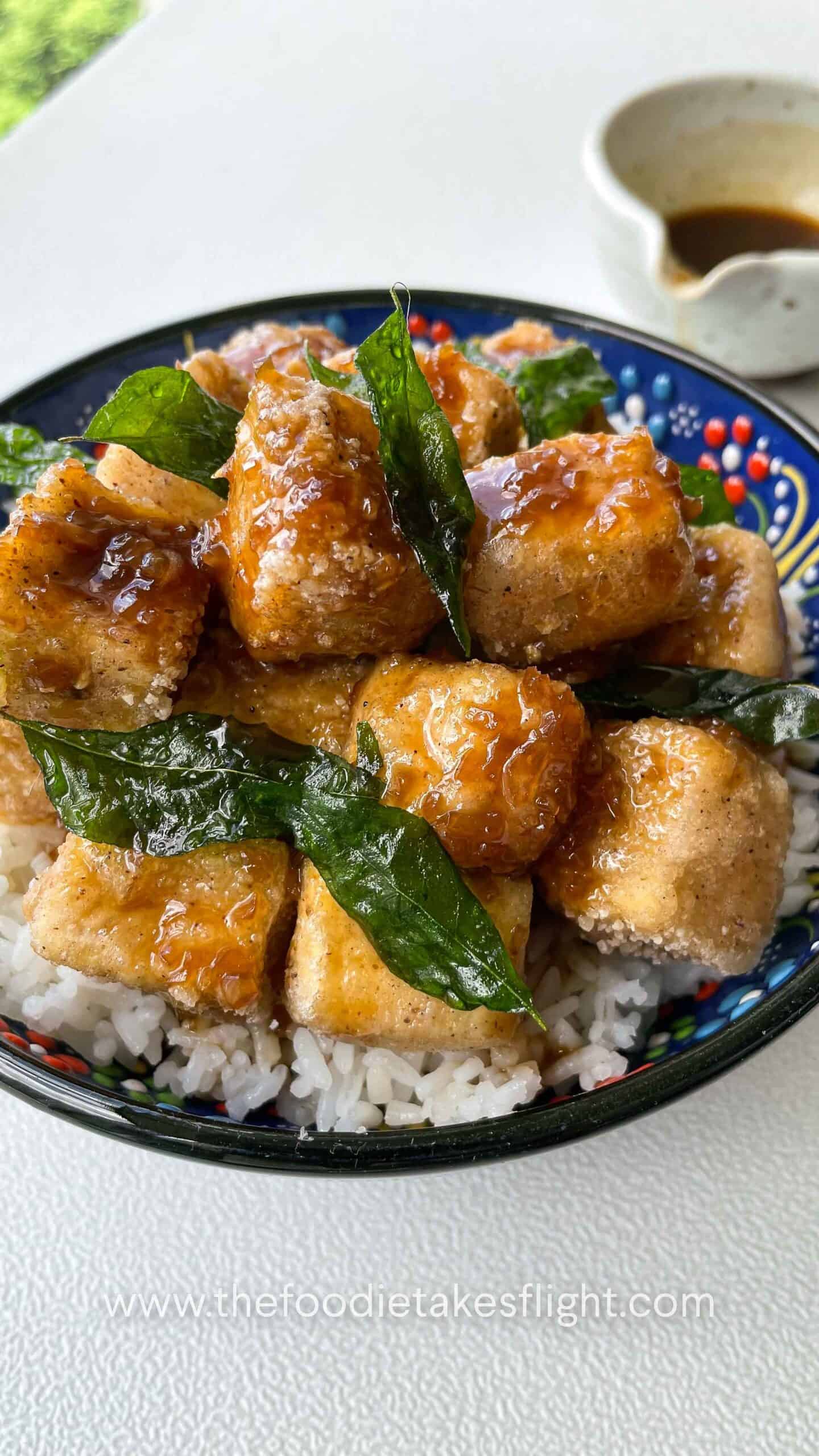
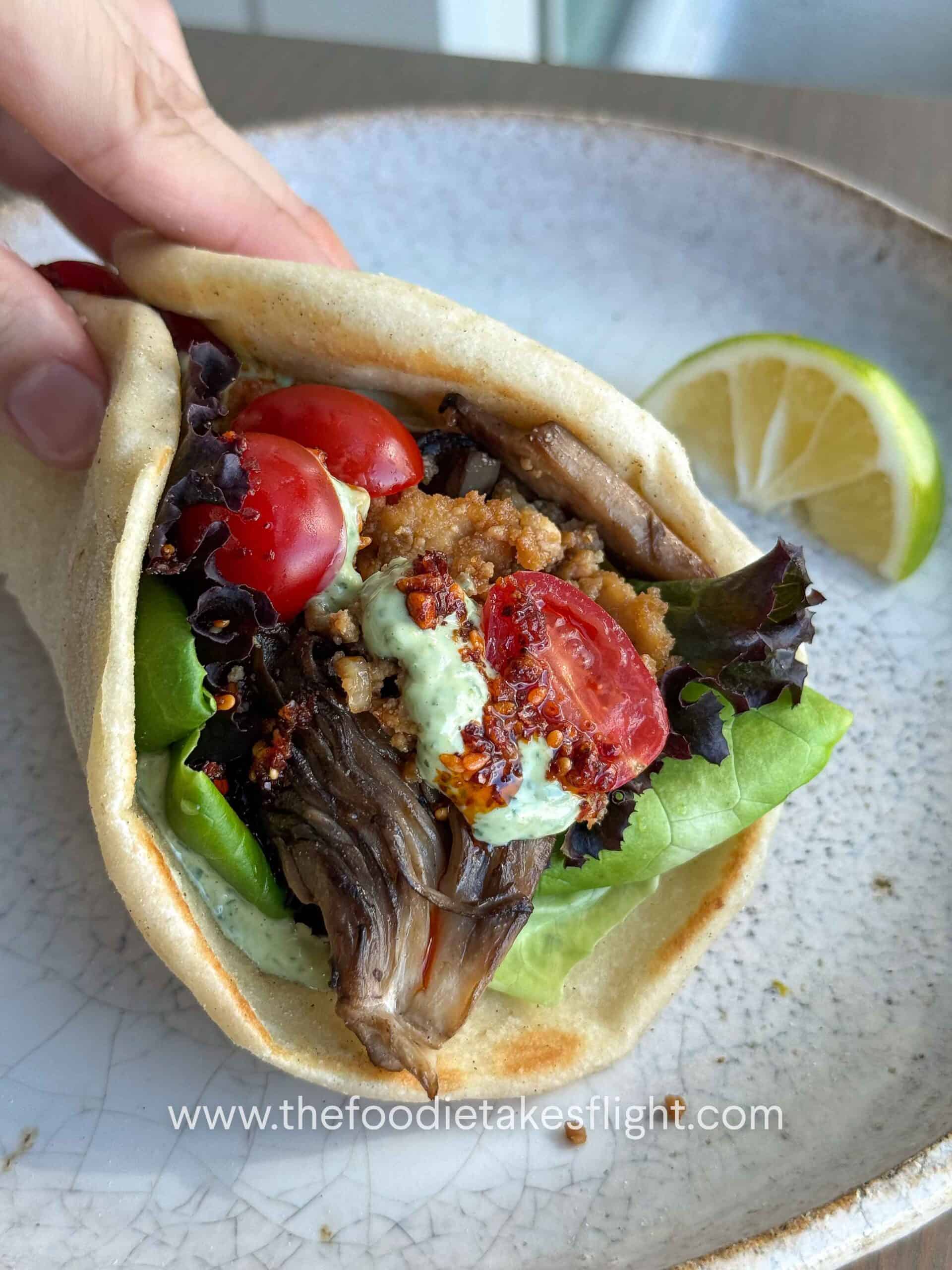
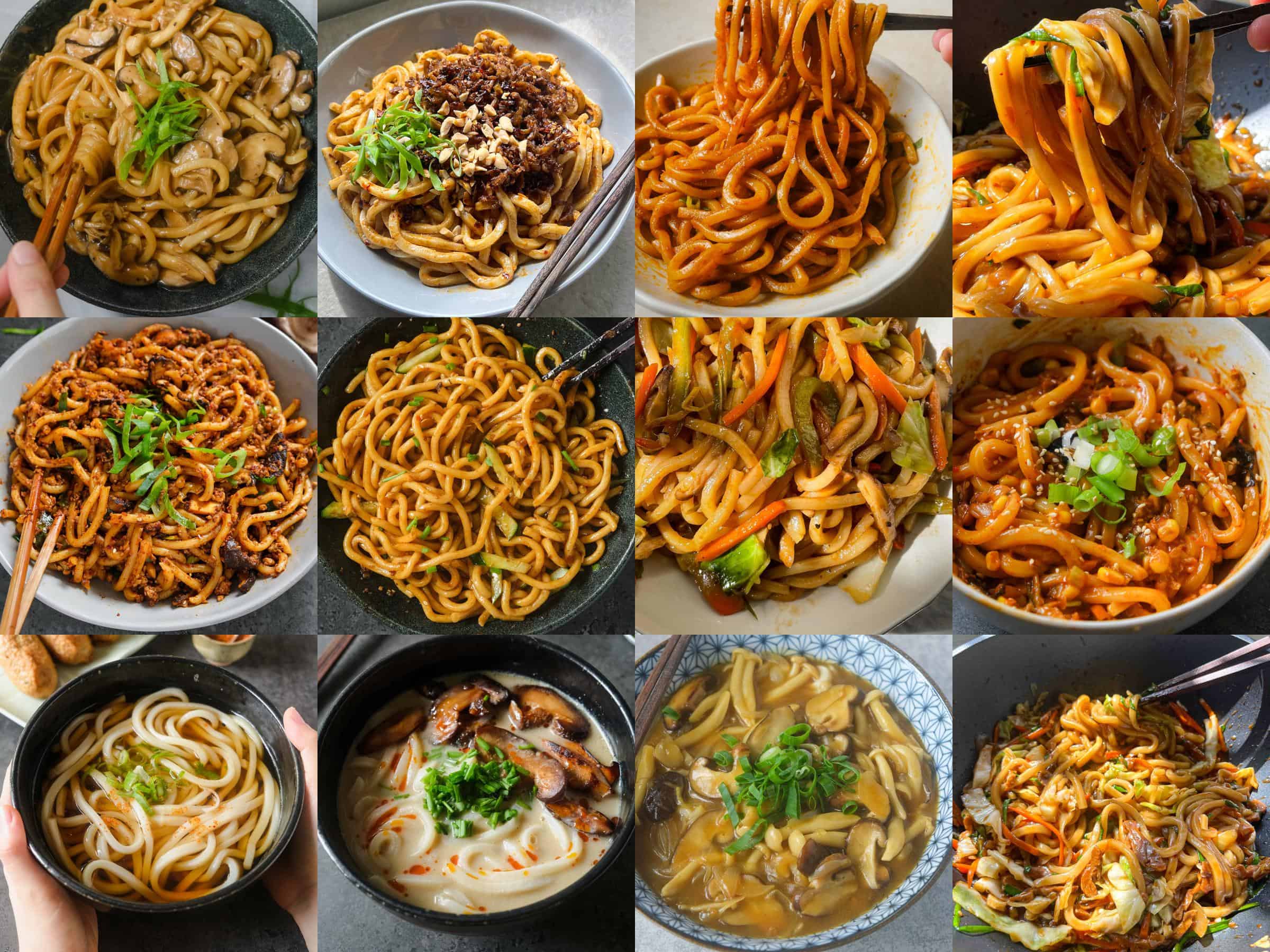
This Post Has 4 Comments
I’m sure the taste would be different but has anyone made this with mexican adobo sauce? Seems to be all I can find here! Thanks!!!
I’m not sure what you are asking? The recipe includes ingredients and instructions for making the adobo. Mexican and Filipino adobo are so very, very different from each other. Mexican abodo on pasta would probably be very tasty, but would be nothing like this recipe.
I just did it, so tasty and simple, thank you for another amazing recipe, im grateful for your great website, thanx a lot
Thank you Alyona! ◡̈